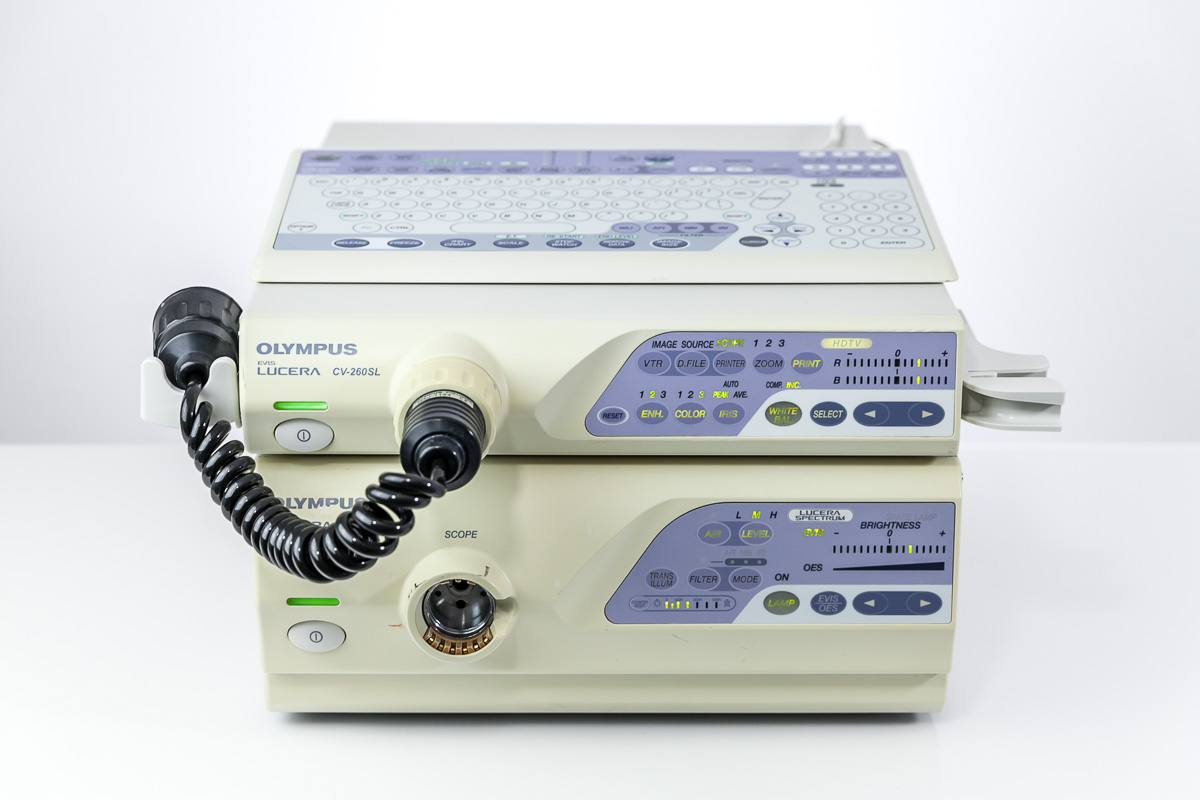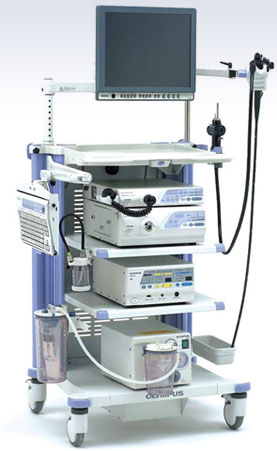Olympus 260

The Olympus System 260 is part of the EVIS EXERA II series of endoscopy systems, an upgrade from the previous 160 series. This system is widely used in gastroenterology, pulmonology, and other medical specialties for diagnostic and therapeutic procedures. It offers enhanced image quality, better handling, and advanced features compared to the 160 series.
Key Features of the Olympus System 260:
Video Processor (Olympus CV-260):
- The CV-260 video processor delivers high-quality images, enhancing visualization of mucosal surfaces and subtle lesions.
- It supports Narrow Band Imaging (NBI), which improves the contrast between blood vessels and surrounding tissues, helping clinicians detect early-stage abnormalities, such as cancer.
- The processor also features Image Enhancement technologies, which allow better examination of the digestive and respiratory tracts.
Light Source (Olympus CLV-260):
- The CLV-260 is an advanced light source, providing stable and adjustable illumination for various endoscopic procedures.
- The system automatically adjusts the light intensity based on the environment and requirements of the examination, ensuring optimal visibility.
- Compatible with NBI technology, this light source enhances tissue contrast during procedures.
Endoscopes:
- The system is compatible with a variety of endoscopes, including gastroscopes, colonoscopes, bronchoscopes, and duodenoscopes, all of which have improved optics and insertion capabilities compared to earlier models.
- The endoscopes in the 260 series offer high-definition (HD) imaging, providing clearer, sharper visuals for more accurate diagnoses.
- Improved angulation and insertion tube flexibility make it easier to navigate through the body’s passages, reducing patient discomfort during procedures.
Narrow Band Imaging (NBI):
- NBI is a major feature in the 260 series, enhancing the clarity of vascular structures and mucosal details by filtering specific wavelengths of light. This technology improves detection rates for precancerous lesions and other abnormalities, especially in the gastrointestinal and respiratory tracts.
HD Imaging:
- One of the significant improvements in the 260 system is its high-definition capability, which gives clinicians a clearer, more detailed view of tissues and structures. This feature is especially valuable for detecting small lesions or subtle changes in tissue.
User-Friendly Interface and Integration:
- The system is designed to be intuitive and easy to use, with a simplified control panel and integration with various accessories like printers and documentation systems.
- It also supports digital video capture, allowing for real-time recording and playback of procedures.
Applications of the Olympus System 260:
- Gastroenterology: Used for procedures like colonoscopy, gastroscopy, and ERCP (Endoscopic Retrograde Cholangiopancreatography).
- Pulmonology: Applied in bronchoscopy for examining the airways and lungs.
- Urology: Utilized for urological procedures like cystoscopy.
- ENT (Ear, Nose, and Throat): In endoscopic procedures for ENT examinations.
Key Benefits of the Olympus 260 System:
- Enhanced Image Clarity: With high-definition imaging and NBI, clinicians can identify abnormalities earlier and more precisely.
- Improved Patient Comfort: The ergonomic design and flexible insertion tubes make procedures less invasive and more comfortable for patients.
- Greater Diagnostic Accuracy: The combination of advanced imaging technologies ensures better diagnostic outcomes, particularly for early detection of cancers and other diseases.
Would you like further details on a specific component or clinical application?
